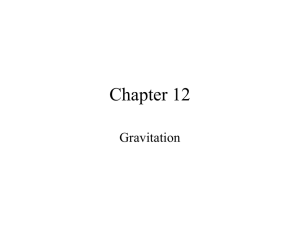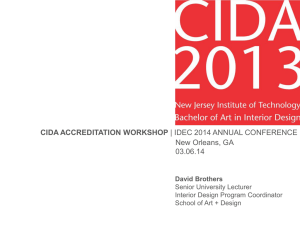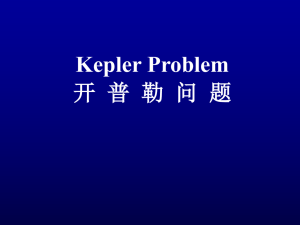Mathematics in Baroque Science
advertisement
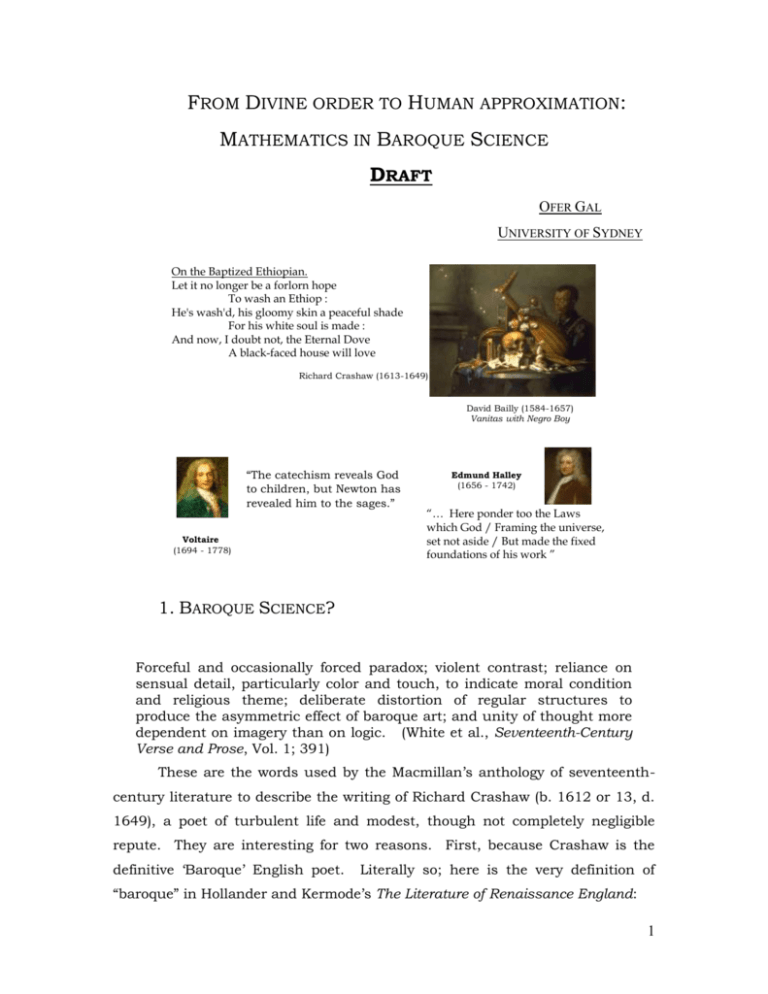
FROM DIVINE ORDER TO HUMAN APPROXIMATION:
MATHEMATICS IN BAROQUE SCIENCE
DRAFT
OFER GAL
UNIVERSITY OF SYDNEY
On the Baptized Ethiopian.
Let it no longer be a forlorn hope
To wash an Ethiop :
He's wash'd, his gloomy skin a peaceful shade
For his white soul is made :
And now, I doubt not, the Eternal Dove
A black-faced house will love
Richard Crashaw (1613-1649)
David Bailly (1584-1657)
Vanitas with Negro Boy
“The catechism reveals God
to children, but Newton has
revealed him to the sages.”
Voltaire
(1694 - 1778)
Edmund Halley
(1656 - 1742)
“… Here ponder too the Laws
which God / Framing the universe,
set not aside / But made the fixed
foundations of his work ”
1. BAROQUE SCIENCE?
Forceful and occasionally forced paradox; violent contrast; reliance on
sensual detail, particularly color and touch, to indicate moral condition
and religious theme; deliberate distortion of regular structures to
produce the asymmetric effect of baroque art; and unity of thought more
dependent on imagery than on logic. (White et al., Seventeenth-Century
Verse and Prose, Vol. 1; 391)
These are the words used by the Macmillan’s anthology of seventeenthcentury literature to describe the writing of Richard Crashaw (b. 1612 or 13, d.
1649), a poet of turbulent life and modest, though not completely negligible
repute. They are interesting for two reasons. First, because Crashaw is the
definitive ‘Baroque’ English poet.
Literally so; here is the very definition of
“baroque” in Hollander and Kermode’s The Literature of Renaissance England:
1
(1) originally (and still), an oddly shaped rather than a spherical pearl,
and hence something twisted, contorted, involuted. (2) By a complicated
analogy, a term designating stylistic periods in art, music and literature
during the 16th and 17th centuries in Europe. The analogies among the
arts [continue Hollander and Kermode] are frequently strained, and the
stylistic periods by no means completely coincide. But the relation
between the poetry of Richard Crashaw in English and Latin, and the
sculpture and architecture of Gianlorenzo Bernini (1598-1680), is
frequently taken to typify the spirit of the Baroque.” (Hollander and
Kermode, The Literature of Renaissance England; 1049)
Secondly, the words used to characterize Crashaw’s style are interesting
because they represent an exact mirror image of what we are accustomed to
think of the great cultural achievement of Crashaw’s life time—the New Science:
“Forceful and occasionally forced paradox” is a clear opposite of the strict
logical coherence advocated by the ideologues of the new philosophy; “violent
contrast” runs against the mathematical harmonies they champion; “sensual
detail, particularly color and touch” are the secondary qualities they specifically
taught should not be relied upon. “Deliberate distortion of regular structures to
produce the asymmetric effect of baroque art” is diametrically opposed to the
trust in mathematical generality and symmetry which we allegedly inherited
from the New Science, “and unity of thought more dependent on imagery than
on logic,” is contrary to the very essence of everything mathematical natural
philosophy was striving to establish.
Galileo Galilei:
Chain lines
Gianlorenzo Bernini:
Hermaphrodite
Isaac Newton:
‘Experimentum Crucis’, from
a 1666 letter to the Royal
Society
David Bailly:
Self Portrait
2
How are we to understand this discrepancy between the two primary
cultural movements of the seventeenth century, the New Science and the
Baroque, in as much as they are properly captured by the oppositions above?
Historians of science, by and large, conveniently ignore it altogether. To the
degree that they are motivated by the traditional, progressive conception of
science developed in the analytic philosophy of last century, they are disposed
to view seventeenth century natural philosophy as a harbinger of Newtonian
Enlightenment (in which this very conception was originally bred). If they lean
towards the historicist-skeptical attitude, they tend to describe it as the
brainchild of Renaissance.
In either case, the question of science as a Baroque phenomenon, which
should be suggested by simple chronology, seems to escape the attention even
of historians of science engaged with those aspects of the 17 th century culture
most prone to the paradoxical, sensual and asymmetrical characterizing
Crashaw’s poetry.
Mario Biagioli, for example, in his iconoclastic studies of
Galilean science as a product of court culture, does gesture rarely towards
Baroque, but analyses the Florentine and Papal courts all the way to the 1630s
in Renaissance terms.
More important—what is in a name, after all—to the
degree that he applies those courtly practices (which he takes as rather more
Renaissance than Baroque) of “thought more dependent on imagery than on
logic” directly to the study of Galileo’s science, it is strictly on those aspects
which
are
in
and
of
themselves
‘sensual’,
namely:
his
astronomical
observations. Biagioli pays much attention to legitimatory and epistemological
debates about the status of mathematics, but Galileo’s mathematical and
experimental practices, which set the most fundamental agenda for what we
recognize as the new science, are barely touched by Biagioli’s analysis.
Biagioli, to be sure, is much more attentive to the cultural resources and
constraints I am interested in than is common among historians of science. To
the degree that the term ‘Baroque science’ does make a rare appearance, and
not entirely as a chronological designator, (c.f. Eriksson and Høyrup), it is in
reference to the obviously ‘sensuous’ realms of the new science—natural
history, Wunderkammern and similar areas (c.f. Findlen and Rowland).
It
seems that only in these contexts can the discrepancy between the
3
complimentary tone of ‘science’ and the slightly pejorative one of ‘Baroque’ be
transcended. But the term itself seems problematic. Even Eileen Reeves, who
studies Galileo’s artistic resources and whose main heroes, like Rubens and
Velasquez, are clearly ‘Baroque painters’, refrains from using the term.
Yet
more interesting is the fact that even those historians of science who are of the
critical approach and find the juxtaposition intriguing take it almost for granted
that the new science, rather than being born by the Baroque, signals its
demise.
A particularly telling example in this regard is Paula Findlen, who
boldly introduced themes from Bakhtin and Huizinga to the study of 17 th
century science. In her story, science provides the final blow to the “color and
touch,” to the “deliberate distortion;” to the playful aspects of European culture.
One might think that the assumption that science was a way out of the
Baroque reflects the instinctive arrogance of historians of science, but it is
actually shared by those who approach the relation from the opposite direction.
Baroque scholars like Maraval do discuss, if rarely at any length, the role of the
new science in providing 17th century high culture with material and
intellectual resources, but never consider science as born out of “Baroque’s
stubborn ambiguity” (Guardiani in Scaglione et al.; 81) itself.
They find in
Mathematicized natural philosophy, rather, a cultural counter-trend or a
harbinger of culture’s next turn.1
I think I have done more than enough to point at what I am seeking: a
depiction of the new science—in its hard core, mechanical, mathematical
incarnations—as a Baroque Phenomenon. And though there is, as I claimed,
too little direct reference to this idea in the literature, there is also important
scholarship that suggests that this may be an important and under-explored
perspective on early modern science.
For example: Margaret Jacob has
analyzed 17th century science from the perspective of high culture, which
wearily observes its appeal to naturalism and other destabilizing tendencies,
and then transforms and assimilates a ‘rational’ and conservative version of it
1
C.f. Maraval, e.g. 193 ff. Skine (e.g. 122 and 131) provides an interesting counter example, but his view
on what is common to science and Baroque is “fundamental laws and transcendental order”
(146)—contrary to what Guardiani (in Scaglione et al.; 81) calls “Baroque’s stubborn ambiguity,”
and diametrically opposed to mine.
4
as a buttress against radicalism. Eileen Reeves, as I mentioned, explored the
neo-Stoic currents common to early Baroque science and art, heralding change
and mutability over eternity and substantiality.
Peter Dear (Discipline and
Experience) showed the intricate relations between single experiments and
mathematical
generalizations.
Fridriech
Steinle
(in
Weinert;
316-69)
demonstrated the complexity and ambivalence of the notion of ‘law of nature’ in
Newton in particular and seventeenth century science and philosophy in
general. In the philosophical realm, Nancy Cartwright (How the Laws of Physics
Lie) has been arguing for the superiority of local, causal laws over what she
term ‘bridging laws’.
The locus classicus of the approach I am trying to
promote is of course Svetlana Alpers’ The Art of Describing, which analyzes
representation as an assembly of concepts, sensibilities and practices common
to Dutch Baroque paintings and to its contemporary science. I owe much to
her work.
2. KEPLER AND NEWTON
A comprehensive characterization of ‘Baroque Culture’ is obviously
beyond the scope of this paper. What I will attempt to do is clarify what it is
that I mean by claiming that the New Science should be treated as part and
parcel of the high culture of the 17th century.
I would like to set my claim
against the almost unchallenged conception of the New Science, namely, that
its main achievement was the submission of all phenomena to a small set of
exact mathematical laws, and that the pursuit of this achievement was
motivated by a conviction that a simple, perfect and harmonious structure
underlies all seemingly unruly phenomena, a structure decipherable by means
of mathematics—the science of simple, perfect structures {ref.}. This common
conception is wrong. It is a backward projection of enlightenment epistemology
on the one hand, and an overextension of late Renaissance dreams and
aspirations on the other. The great success of late 17th century mathematicized
natural philosophy, I will argue, was predicated on treating mathematics not as
an instrument for revealing the divine harmony of the universe, but as means
to approximate the varieties and multitudes of nature into a human-scale, local
5
order. This approach followed and entailed a tacit conviction that the universe
is an imperfect machine, an erratic assemblage of isolated laws and constants.
True, 17th century natural philosophers continued to herald the perfection,
simplicity and beauty of creation, while increasingly treating nature as
irreducibly complex. More than anything else, it is this very tension between
public commitments to order and practical acknowledgement of discord that
reflects the new science deep entrenchment in high Baroque culture.
Of these general claims, I will concentrate in the following in illustrating
the change in the concept of mathematical order through the century. It can be
nicely captured by comparing the fates of the following two diagrams:
Diagrams of Disorder
Kepler’s “accurate depiction
of the motions of the star
Mars.” Astronomia Nova, 119
Newton’s diagram from his December 13,
1679 letter to Hooke). The stone falling
through the earth from A along FOG etc.
changes its apsides with every orbit.
70 year separate these diagrams, and they are different in audience and
target. Kepler’s is public and in print—it opens the 1609 Astronomia Nova—
Newton’s is private and hand-drawn—part of a 1679 letter to Robert Hooke.
Kepler is aiming to convince the general astronomical public that the geostatic
system, whether in its Ptolemaic or Tychonic version, is untenable. Newton is
suggesting to his correspondent Hooke that his—Hooke’s—idea that planetary
motions
are
a
compound
of
inertial
motion
and
solar
attraction
is
fundamentally flawed. Kepler’s diagram is based on a careful calculation from
the geostatic theory he thinks obsolete; Newton, on the other hand, feigns a
quantitative theory he does not really have and fabricates a construction.
6
Yet the structure of the argument these diagrams embody is essentially
the same. Both depict a hypothetical planetary orbit, suggested by the theory
under consideration, and both expect their audience to immediately perceive
the orbit as clearly and obviously absurd, and eschew the theory that produced
it. And why is the orbit obviously absurd? Because it is chaotic. Because,
and I quote Kepler, “These motions, continued farther, would become
unintelligibly intricate, for the continuation is boundless, never returning to its
previous path.” As Newton will put it later, Hooke’s idea means that “there are
as many orbits to a planet as it has revolutions.”
And for both writers the
argument ends here—an “unintelligibly intricate” orbit is prima facie
unacceptable.2
An absolute trust in simplicity and orderliness is entailed in these
diagrams.
This is the assumption, too clear and distinct to require explication,
that turns both into arguments, and it is around this assumption that my
argument revolves.
For Kepler, I am going to claim, this is a genuine
commitment: it is fundamental to the epistemology that guides him and is
embedded in his work throughout his career. For Newton, on the other hand, it
is a commonplace.
He can use this type of ‘argument from order’ effectively,
but by the time he sends his sketch to Hooke (1679-80), it represents no more
than a rhetorical topos, which he easily forgoes once it is in conflict with his
problem-solving strategies.
For all practical intents and purposes, Newton’s
universe is imperfect and far from simple. This is a metaphysical difference,
but far from being free-wheeling ‘white mythology’, it has unmitigated effect on
their mathematical work: for Kepler it is the perfection of mathematics which
makes it the proper medium through which to express the beauty, majesty and
absolute perfection of the Creator and His creation—the magnificent Harmony
of the World. In diametric opposition, Newton’s work takes the turn that would
lead him to the Principia once, following the correspondence of Hooke, he
adopts the view expressed in the following Scholium:
The whole space of the planetary heavens either rests … or moves
uniformly in a straight line, and hence the communal centre of gravity of
the planets … either rests or moves along with it. In both cases … the
2
Ref to Ashgate
7
relative motions of the planets are the same, and their common centre of
gravity rests in relation to the whole of space, and so can certainly be
taken for the still centre of the whole planetary system. Hence truly the
Copernican system is proved a priori. For if the common centre of
gravity is calculated for any position of the planets it either falls in the
body of the Sun or will always be very close to it. By reason of this
deviation of the Sun from the centre of gravity the centripetal force does
not always tend to that immobile centre, and hence the planets neither
move exactly in ellipse nor revolve twice in the same orbit. So that there
are as many orbits to a planet as it has revolutions … and the orbit of
any one planet depends on the combined motion of all the planets, not to
mention the action of all these on each other.
But to consider
simultaneously all these causes of motion and to define these motions by
exact laws allowing of convenient calculation exceeds … the force of the
entire human intellect. Ignoring those minutiae, the simple orbit and the
mean among all errors will be the ellipse ...3
Here is the “forceful and occasionally forced paradox,” the “violent
contrast” of the Baroque. Newton is not promising to save the unruly
appearances—he is proclaiming the disorderly behavior of the elements. It is
metaphysical imperfection rather than epistemological incompetence he is
lamenting, because it is not only that “calculation exceeds … the force of the
entire human intellect,” but that “the planets neither move exactly in ellipse nor
revolve twice in the same orbit. So that there are as many orbits to a planet as
it has revolutions.”
And this is not just a mysterious consequence of some
esoteric theoretical move for Newton—it is a necessary and fundamental
correlate of the metaphysics of force that he inherits from Hooke and deploys in
the De Motu and the Principia. The disorder is necessitated by the underlying
mechanisms: if attraction is the basic quality of matter, and if, therefore, all
bodies attract each other, and if the parameters of this attraction are what
accounts for the planetary motions, then the planetary orbits have to be
complex. Or, to say it even more boldly, there are no real orbits at all; there is
only a “mean among all errors.” There is no eternal, perfect infrastructure to
the universe, to be captured mathematically, only “all these causes of motion,”
which mathematics can help construct into “the simple orbit” by “ignoring
minutiae.”
3
ref
8
Newton’s “distortion of regular structures to produce the asymmetric
effect of baroque” is not merely in the acknowledgement that “there are as many
orbits to a planet as it has revolutions.” It also resides in the suppression of
this metaphysical conviction. Albeit central to Newton’s De Motu Sphæricorum
Corporum in Fluidis—one of the last drafts of the Principia—this Scholium has
been carefully omitted from his opus magnum.
The caution is completely
understandable: it comprises more than a belated argument for Copernicanism,
and much more than a technical consequence of the eccentricity of the sun.
What Newton expresses here is a conversion of a religious magnitude, and
indeed religious implications. Newton does not claim that we should strive at
approximate and instrumental knowledge because of the inherent epistemic
limitations of the human mind. Quite the opposite: the only hope for order, he
declares, is
in
the
structures
imposed
on
the
intrinsic
metaphysical
disorderliness of the world by “ignoring minutiae” and constructing “the mean
among all errors.” And it “Baroque’s stubborn ambiguity” which resides in the
carefully contained but ever present tension between Newton’s conviction,
which, as I will demonstrate, is essential to his trailblazing work after the
correspondence with Hooke, and celebratory proclamations such as “… Here
ponder too the Laws which God / Framing the universe, set not aside / But
made the fixed foundations of his work,” from Halley’s pen4, which he allowed
to adorn his publication
There are good reasons to view the scholium as reflecting a personal
conversion which Newton is going through.
The concept of hands-on,
personally involved God that Newton develops in the 1690s suggests that much.
But my interests here are not in the biographical but rather in the general
decline, through the 17th century, of the trust in mathematically-ordered nature
and the institution, in its stead, of mathematics as a means for imposing a
precarious human order on a fundamentally disordered nature.
And I will
sketch this by comparing the fate of the two diagrams I presented above.
3. KEPLER AND PERFECTION
4
Ref to Halley’s Ode to Newton
9
For Kepler, I claimed above, the Astronomia Nova diagram represents a
real commitment: it is embedded in a working metaphysics of universal
harmony and an effective belief in the power of mathematics to reveal the divine
infrastructure of the universe. In his Mysterium Cosmographicum, published
13 years earlier, Kepler provides his most explicit expression of both: the
universe, he tells his readers there, is “complete, thoroughly ordered and most
splendid” (23-4/95-97). It is simple, and its structure necessary. And Kepler’s
mathematical inquiry is strictly structured by these assumptions. His question
in the Mysterium is why are there exactly six planets, and his answer is that
there are exactly five perfect solids. Thus, if the distances between the planets
correspond to these solids, namely—if the proportions between their distances
can be shown to correspond to the proportions between the solids (for there are
no material solids in the heavens)—then the number of planets has been
explained—the mathematical directly account for the physical.
But what kind of an explanation is this?
Why should abstract
mathematical proportions account for a material fact?
aesthetic value be evidence for their truth?
Why should their
Guided by the metaphysics of
order, Kepler suggests two complementary answers to this question. Either:
God, like one of our own architects, approached the task on constructing
the universe with order and pattern, as if it were not art which imitated
Nature, but God himself had looked to the mode of building of Man who
was be
Or:
it is by some divine power, the understanding of the geometrical
proportions governing their courses, that the stars are transported
through the ethereal fields and air free of the restraints of the spheres
Either mathematics is God’s own blueprint for the universe, or the
planets themselves are using the “geometrical proportions governing their
courses” to navigate the empty vastness of the heavens. Kepler never gives up
on the first possibility (that he would later use as a proof for creation and the
existence of God). The assumption, that the rationality of the structure can
only affect the material realm if that realm (or elements of it, like the celestial
bodies) is also endowed with rationality is, however, an awkward one, and
10
Kepler largely retreats from it in the Astronomia Nova. But, against common
wisdom, Kepler never eschews the mathematical enthusiasm of the Mysterium
for the physicalism of the Astronomia Nova. This is how he himself analyses his
development in a note he adds to this paragraph in the second edition of the
Mysterium, published unchanged (apart from the annotation) in 1621: “So
indeed I supposed,” he says, concerning the rationality of the planets,
but later in my Commentaries on Mars [the Astronomia Nova] I showed
that not even this understanding is needed in the mover. For although
definite proportions have been prescribed for all the motions … by God
the Creator, yet those proportions between the motions have been
preserved … not by some understanding created jointly with the Mover,
but by … the completely uniform perennial rotation of the sun [and] the
weights and magnetic directing of the forces of the moving bodies
themselves, which are immutable and perennial properties. (60/169)
Now note what it is that Kepler thinks he has defended in the Astronomia
Nova. The notion of perfect proportions remains untouched; changed is only
the mechanism by which they are followed. The mechanism itself is simple: the
rotation of the sun and the magnetism of the planets are “completely uniform
[and] perennial.”
The mathematics—the analysis of the proportions between
the solids and the consequents distances and periods—is left to safeguard the
“complete, thoroughly ordered and most splendid universe.”
4. NEWTON AND THE MOVING APSIDES
It does not mean, of course, that Kepler is unaware of the difficulties in
applying his grand mathematical scheme to the minute details of observation.
Quite the contrary. The major part of the Mysterium is dedicated to this task;
in particular, to finding a place for the eccentricities of the planetary orbits
between
the
nesting
polyhedra—this
indeed
was
the
pretext
for
correspondence with Brahe, leading to their illustrious collaboration.
his
The
point, however, is exactly this: Kepler excuse the eccentricities by fitting them
into the mathematical model constructed according to independent principles.
For Kepler, the world has a universal, harmonic, perfect structure, which can
be discovered by a-priori, mathematical considerations, and into which one
then has to fit the embarrassing particularities of the empirical.
11
Compare all this, now, to Newton’s transformation of the argument
against Hooke, which in its original form was so similar in structure to
Kepler’s. Its final version is to be found in Props. 43-45 of the first book
of the Principia:
If a body, under the action of a centripetal force that is
inversely as the square of the height, revolves in an
ellipse having a focus in the center of forces, and any
other extraneous force is added to or taken away from
this centripetal force, the motion of the apsides that
will arise from that extraneous force can be found out
… and conversely.
The suggestion
that the consequent
motion of the
apsides
invalidates Hooke’s proposal to “compound the celestiall motions of the
planets,” then, has been turned on its head.
Now, it is the ability to
calculate
Newton
this
motion
that
validates
for
the
fantastic
mathematical edifice he erected on the basis of Hooke’s proposal. There
is nothing embarrassing anymore in the fact that the orbits themselves
are revolving, anymore than there is in the “deviation of the Sun from the
centre of gravity.” Both are contingent, particular facts about out world.
For the post-Hooke Newton, the world is full with such contingent,
particular constants for which we can construct more-or-less stable
mathematical structures.
Mathematics is a tool to manipulate and
control the complexity of the universe, rather than a mirror of its
underlying simplicity. The order and exactitude in the Newton’s physica
coelestis is that introduced by his mathematics.
5. THE ISL:
FROM
GEOMETRICAL NECESSITY
TO CONVINIENT
APPROXIMATION
Let me offer another example of this change, involving the same
protagonists and a related issue—that of the law of decline with the square of
distance, which Kepler formulated for light and Newton, famously, applied to
12
universal gravity. This is a particularly interesting example not only because
Newton’s indirect indebtedness to Kepler here allows some more continuity in
my narrative, but because it touches exactly on the question of the place of
mathematics in the order—or ordering—of the universe.
Light, for Kepler,
fulfills exactly this role: it is the conduit of God’s mathematical archetypes, as
he explains in his Optical Part of Astronomy of 1604:5
the spherical is the archetype of light (and likewise of the world); the
point of the center is in a way the origin of the spherical solid, the
surface the image of the inmost point, and the road to discovering. The
surface is understood as coming to be through an infinite outward
movement of the point out of its own self, until it arrives at a certain
equality of all outward movements. The point communicates itself into
this extension, in such a way that the point and the surface, in a
commuted proportion of density and extension, are equal. (Ad
Vittelionem; 19)
Light is a substantiation of geometry. It is the embodiment of sphericity, from
which follows the law governing its decline with distance:
just as [the ratio of] spherical surfaces, for which the source of light is
the center, [is] from the wider to the narrower, so is the density or
fortitude of the rays of light in the narrower [space], towards the more
spacious spherical surfaces, that is, inversely. For … there is as much
light in the narrower spherical surface, as in the wider, thus it is as
much more compressed and dense here than there. (Ad Vittelionem, 10)
The assumption of the mathematical structure of nature, fortified by
reflections about the essential geometrical nature of light, allows Kepler to infer
the physical properties of light from purely geometrical considerations.
Five
years after completing the Optical Part of Astronomy he proceeds towards a fullblown physica cœlestis in the Astronomia Nova, and attempts to make use of his
discoveries. The import of light, the courier of the sun’s powers to the planets,
suggests it as a perfect analogy by which to conceptualize his virtus motrix—the
solar force stirring the inertial planets. But instead of applying to the motive
force the mathematical properties he so painfully derived for light, these very
geometrical considerations finally convince Kepler that light can, at best, serve
as analogy—it cannot be one an the same with the solar motive force.
The
velocity of the planets is inversely proportional to their distance from the sun,
5
Ref to HOS
13
not to the square thereof, he reasons, not to mention that light is dispensed
spherically, and the motive force, apparently—only in the plane of he ecliptic.
The geometrical make-up of the two types of solar emanation—the mathematics
embedded in their nature—is different, so the motive force cannot follow the
inverse square law, hence cannot be light. The commitment to the geometrical
infrastructure has a price as well as benefits.
Kepler’s torturous way of legitimizing his mathematical ‘physics of the
heavens’ failed to impress even his popularizer and most ardent admirer, Ismaël
Boulliau. Perhaps his Catholicism released Boulliau from Kepler’s protestant
worries about God and mathematical perfections, or perhaps it was the benefit
of another generation of mathematization of natural philosophy, but Boulliau
simply could not see the point in Kepler’s vacillations. “On the rocks of these
hesitations,” he exclaims in the Astronomia Philolaica of 1645, Kepler “crushes
his very astronomy into shipwreck,”6 and suggests both geometrical and
physical arguments to save the forsaken analogy between light and virtus
motrix.
Boulliau finds it almost hard to distinguish between them, using
‘species’—carefully assigned by Kepler to the solar moving force—to denote
light, and assaults each and every one of Kepler’s diffident distinctions between
the two.
But it was easy for Boulliau to patronize—he never took upon himself the
daunting task of making mathematics explanatory, and his geometrical and
physical speculations remained completely distinct from each other, even if
adjacent. When, another twenty years later, Robert Hooke was attempting to
follow Kepler’s footsteps, he found himself facing very similar difficulties and,
like Kepler, was retrained from making full physical use of the inverse square
law by the geometrical considerations from which this ratio was born. Not that
Hooke had much patience for neo-Platonic worries. In his 1665 Micrographia
he seamlessly imports the inverse square law from light to gravity in the
following parenthesized remark:
6
Ref to Bouliau
14
[I say Cylinder, not a piece of a cone, because … that triplicate proportion of the
shels of a Sphere, to their respective diameters, I suppose to be removed by the
decrease of the power of Gravity]7
Hooke is concerned here with the Tychonic problem of the implications of
atmospheric refraction on astronomical observations, and he
conducts
Torricelli-style experiments in order to calculate the size and density of the
atmosphere. This off-hand argument allows him to approximate the height of
the column of air above his mercury tubes: the decline of “the power of
gravity”—necessarily by the square of the distance (which he doesn’t bother to
explicate, but without which the argument does not work)—means that instead
of truncated cone (in which the volume is proportional to the cube of height), he
can calculate the column as a cylinder (namely—as if its volume is proportional
to the height of the atmosphere).
This almost frivolous use of mathematical approximation is already quite
removed from Kepler’s grave hesitations about the way the perfection of his
geometry reflects the perfection of creation, the way perfect geometry is
distributed into the imperfect physical realm (through light), and what all this
allows by way of mathematical hypotheses.
But Hooke’s application of the
inverse square law actually has more in common with Kepler’s attitude than
might be assumed. As I have shown in a different place8, the only justification
he has for the move is exactly the geometrical analogy: like light, gravity, and
with it the atmosphere, expands spherically. The image of spherical ‘explosion’
of agency or active principle from center towards periphery, which produced the
inverse square law for Kepler, is exactly what is on Hooke’s mind when he
inquires about the behavior of light in the atmosphere and how the atmosphere
itself is constituted by gravity. Like Kepler, he treats the agency as operating on
the enveloping “shells” and can thus easily apply the law for the decline of light
to the decline of gravity.
But, again like Kepler, these very considerations
prevent him from making real physica cœlestis use of the inverse square law.
In 1673 he promises a
7
Ref to Micrographia.
8
Ref to Hunter and Cooper
15
System of the World ... answering in all things to the common Rules of
Mechanics [which] depends on three Suppositions. First, That all
Cœlestial Bodies Whatsoever, have an attraction or gravitating power
towards their own Centers, whereby they attract not only their own parts
... but ... also ... all the other Cœlestial Bodies that are within the sphere
of their activity; and consequently that not only the Sun and the Moon
have an influence upon the body and motion of the Earth, and the Earth
upon them, but that [all the planets], by their attractive powers, have a
considerable influence upon its motion as in the same manner the
corresponding attractive power of the Earth hath a considerable
influence upon every one of their motions also. The Second Supposition
is this, That all bodies whatsoever that are put into a direct and simple
motion, will so continue to move forward in a streight line, till they are by
some other effectual powers deflected and bent into a Motion, describing
a Circle, Ellipsis, or some other more compound Curve Line. The third
supposition is, That these attractive powers are so much the more
powerful in operating, by how much the nearer the body wrought upon is
to their own Centers9
Hooke’s mechanical “System of the World” was to be based on the
suppositions of universal attraction, Cartesian inertia and a mathematical force
law: “these attractive powers are so much the more powerful in operating, by
how much the nearer the body wrought upon is to their own Centers.” All is
ready to apply the inverse square law for the decline of “attractive powers” with
distance, the law he so easily imported from light to gravitation eight years
earlier in the Micrographia, but Hooke declines the opportunity: “what these
several degrees [of decline]” he adds, “I have not yet experimentally verified.”
The image of spherical ‘explosion’ that related gravity to light seems to him
inapplicable to the notion “attractive power,” as it seemed to Kepler concerning
his motive force, so, like Kepler, he refrains from applying the law for decline
from solar illumination to solar attraction. In spite not being truly committed to
Kepler’s notions of mathematical order, the similar geometrical reasoning which
leads him to adopt the inverse square law prevents him from turning it into a
flexible algebraic operator in the calculation of orbits.
And this is exactly what Newton does, starting from the same version of De
Motu from which the ominous “Copernican Scholium” is taken, and he does it
in a most Baroque way. Using a few fast-and-loose moves which Kepler would
have hardly recognized as the “Mathematicals,” which “God the Creator had
9
ref
16
with him as archetypes from eternity” (Mysterium Cosmographicum, 1619
edition note to Ch. 11), Newton establishes a geometrical expression for the
centripetal force holding a revolving body in a circular orbit: f AD2/R, where
AD is an infinitesimal arc.10 He then adds five corollaries, all simple derivations
from this expression. He assumes uniform motion, so AD is proportional to the
body’s velocity. Thus, combining AD V with f AD2/R, it follows that:
Corr. 1. f V2/R.
Since
the
velocity
of
rotation
is
inversely
proportional to the period of revolution, i.e., V 1/T,
this is equivalent to:
Corr. 2. f R/T2.
Combining these two proportions, Newton can
construct a force law—a ratio between force and distance—for any given ratio
between the radius of the orbit and the period of revolution, and he
demonstrates this capacity by providing three different ones:
Corr. 3. if T2 R, then f is distance-independent,
Corr. 4. if T2 R2, then f 1/R, and
Corr. 5. if T2 R3, then f 1/R2.
“the case of the fifth corollary holds for the celestial bodies … astronomers are
now agreed” he adds, almost as an afterthought.
Newton has no use for the geometrical imagery that provided Hooke and
Kepler with justification for the mathematical-causal claims. But his seemingly
non-committal presentation does not reflect any particular doubt on Newton’s
part either in the mathematical expression or in what “astronomers are now
agreed.” Nor is the curious run through the possible force laws produced by
replacing the variables of his construct with imaginary data a draft trial to be
perfected in the final opus with well-established real data. Quite the opposite:
the five corollaries of the De Motu are expanded in Proposition 4 of the Principia
to nine and the case of where “the periodic times are as the 3/2 powers of the
radii” is just the sixth of them.
Moreover, the language distinguishing this
particular in the scholium to follow is hardly more excited than in De Motu:
10
Ref. to book.
17
The case of corol. 6 holds for the heavenly bodies (as our compatriots Wren,
Hooke, and Halley have also found independently). Accordingly, I have decided
that in what follows I shall deal more fully with questions relating to the
centripetal forces that decrease as the squares of the distances from centers
(Principia, 452)
Which force law to attend is, apparently, a matter of choice for Newton; he
had “decided” on the Inverse Square Law. This idea becomes less surprising
when one considers Newton’s previous proposition and its corollaries:
Proposition 3, Corollary 2: And if the areas are very nearly proportional to the
times, the remaining force will tend towards body T very nearly.
Proposition 3, Corollary 3: And conversely, if the remaining force tends very
nearly toward body T, the areas will be very nearly proportional to the times.
(Principia, 448-9)
All that Newton requires, so these corollaries suggest, is that the
mathematics and the observations fit quam proxime. But there is more than
skepticism or careful induction here.
Newton the boundaries of inquiry.
The ‘very nearly’ does not mark for
The precarious relation between the
mathematics and the empirical findings that Newton establishes in De Motu
represents a fundamental and carefully worked out principle and an efficient
tool of physico-mathematical investigation: Newton works his way to the Inverse
Square Law of gravity (ISL) by comparing what the data allows quam proxime.11
Newton’s approach to demonstrating the applicability of the hard-earned
ISL to the force by which the sun shapes the planetary orbits is founded on the
insight that it cannot be achieved by analyzing the empirical data and Kepler’s
‘laws’ directly: very different laws can produce heavenly motions which are “very
nearly” identical. Using the same proto-infinitesimal techniques of the De Motu
Newton will prove in Prop. 10 that for a body traveling in an elliptical orbit, “the
law of the centripetal force tending towards the center of the ellipse” is as the
(changing) distance of the body from the center of force (Principia, 459). And in
the next proposition, no. 11, he will prove that if “the centripetal force [is]
tending towards a focus of the ellipse,” it will be inversely as the square of the
distance (Principia, 462-3). In other words, if the sun is in the center of the
11
In the following I am much indebted to George Smith’s excellent analysis of these theorems in “From
the phenomenon of the Ellipse to an Inverse-Square Force: Why Not?”
18
planets’ elliptical orbits, gravity increases with distance; if the sun is at the
focus of these orbits, gravity declines as the square of this distance. For orbits
which are deviate very little from the circular, as the orbit Kepler assigns to
Mars, the sun is both “very nearly” at the center and very nearly at the focus;
but obviously, gravity cannot be proportional to both the distance and its
square.
Thus, the ellipse may provide a better
geometrical depiction of natural motion—it is
the orbit with the closest fit to the observations,
Kepler demonstrated—but assuming it one
cannot distinguish between the various possible
laws of the force affecting this orbit.
Newton
remains
with
motion
Instead,
“in
the
circumference of a circle,” and develops a very
complex theorem (proposition 7) which allows him “to find the law of centripetal
force tending toward any given point” inside this circular orbit. Expanding it on
the basis of the preceding propositions, George Smith transformed Newton’s
geometrical proportion into modern algebraic notation in which force is
inversely as:
5
3
SP
2 SP
2 2 SP
2 3 SP
31
31
1
a
a
a
a
1
Where S is the hypothetical position of the center of force (the sun in the solar
system), P—the position of the moving body (the planet), a—the diameter of the
orbit and —its eccentricity (the distance of center of force—the sun—from the
geometrical center to the obit). As Smith acutely points out, “SP to the power of 2 is
nowhere to be found in this expression” (40). The expression as a whole, however,
converges towards SP2 the closer the eccentric circle can be seen as an
approximation of an ellipse with the center of force at a focus—it provides that
gravitation will be ‘very nearly’ proportional to 1/r2 if the planetary orbits are
very nearly ellipses and the sun very nearly at their focus.
It is therefore completely clear that Newton’s “Quam proxime” does not
express a failure to apply simple mathematics to complex nature. Rather, it is a
particular constraint that Newton puts on both sides—nature and mathematics:
19
the mathematical law is not exactly describe an idealization of the natural
motion, but to approximate a trajectory that approximates a particular curve.
For the ISL to be a demonstrated law of nature, it is not enough to deduce it
from Kepler’s (idealized) first and third laws—the force law needs to converge
towards ISL as the orbits converge to Kepler’s first law. The relation between
the ISL and the ellipse fails this criterion. But there is no fact of the matter as
to whether the orbit is an eccentric circle or ellipse.
After all, “the planets
neither move exactly in ellipse nor revolve twice in the same orbit,” so Newton is
free to prove the ISL from the former, even though “the simple orbit and the
mean among all errors will be the ellipse.” And indeed, the famous propositions
concerning the motion of the planets at the beginning of “The System of the
World” of Book 3 of the Principia are all based on the circular orbits theorems
beginning Book 1.
6. CONCLUSION
The ISL has been given a brave hew meaning.
From a feature of divine
infrastructure of young Kepler—a member of the reified ‘mathematicals’—through a
partially-flexible geometrical structure for Hooke, to a sophisticated means of
approximation is Newton’s Principia, the import of the ISL captures what mathematical
order has come to represents: a human solution to the challenges of a messy nature. Not
a “deliberate distortion of regular structures,” but most definitely an acute insight that
these structures are not furnished by nature, and had to “forced,” paradoxically, by human
powers of approximation. Nature and Nature's laws lay hid in night; wrote Pope, God
said, "Let Newton be!" and all was light. What Pope had in mind was Kepler’s
Renaissance dream of divine order. Newton’s achievement was largely indebted
to relinquishing this dream in the name of the enforced order of the Baroque.
20
REFERENCES
Alpers, Svetlana. The Art of Describing: Dutch Art in the Seventeenth Century.
Chicago: The University of Chicago Press (1995).
The making of Rubens. New Haven: Yale University Press (1995).
Baker, Gordon and Katherine J. Morris. Descartes' Dualism. New York:
Routledge 1996).
Butterfield, Herbert. The Origins of Modern Science, 1300-1800. London: Bell
(1949).
Cartwright, Nancy. How the Laws of Physics Lie. Oxford: Clarendon Press
(1983).
Castle, Terry. Masquerade and Civilization: the Carnivalesque in EighteenthCentury
English
Culture
and
Fiction.
Stanford:
Stanford
university Press (1986).
Chen-Moris, Raz. “Kepler’s Optics: The Mistaken Identity of a Baroque
Spectator.” Zeitsprünge. Forschungen zur Frühen Neuzeit 4 (2000);
50-71.
“Optics, Imagination, and the Construction of Scientific Observation in Kepler’s
New Science.” The Monist 84.4 (Oct. 2001); 453-486.
Clark, S. and A. Rehding (eds.):
Renaissance
to
the
Music Theory and Natural Order from the
Early
Twentieth
Century.
Cambridge:
Cambridge University Press (2001).
Coelho, Victor (ed.): Music and Science in the Age of Galileo. Dordrecht: Kluwer
Academic Publishers (1992).
Cohen, Bernard I. “The Eighteenth-Century Origins of the Concept of Scientific
Revolution”. Journal of the History of Ideas, 37 (1976): 257-288.
Dear, Peter. Discipline and Experience: The Mathematical Way in t he Scientific
Revolution. Chicago: The University of Chicago Press (1995).
Eriksson, Gunnar. The Atlantic Vision: Olaus Rudbeck and Baroque Science.
Canton, Mass.: Science History (1994).
Findlen, Paula. “Scientific spectacle in baroque Rome: Athanasius Kircher and
the Roman college museum.” Roma Moderna e Contemporanea A.
3, n. 3 (1995); 625-665
21
Floris Cohen, H. The Scientific Revolution : A Historiographical Inquiry. Chicago:
The University of Chicago Press (1994).
Gal, Ofer. “Constructivism for Philosophers.” Perspectives on Science 10.4
(2003); 523-549.
“Hooke, Newton, and the Trials of Historical Examination.” Physics Today
(August 2004); 19-20.
“Hooke's Programme: Final Thoughts.” Michael Hunter and Michael Cooper
(eds.), Robert Hooke: Tercentennial Studies. London: Ashgate (in
press, 2005).
Meanest Foundations and Nobler Superstructure: Hooke, Newton and the
Compounding of the Celestiall Motions of the Planetts. Dordrecht:
Kluwer (2002).
Gouk, Penelope: Music, Science and Natural Magic in Seventeenth-Century
England. New Haven: Yale University Press (1999).
Herivel, J. W. The Background to Newton’s Principia. Oxford: Clarendon Press
(1965).
Hollander, John and Frank Kermode. The Literature of Renaissance England.
New York: Oxford University Press (1973).
Høyrup, Jens. “Reflections on the Baroque in the History of Science.” Physis:
Rivista Internazionale di Storia della Scienza 34 (1997); 675-694.
James, Jamie: The Music of the Spheres. London: Little, Brown and Co. (1993).
Kersten, F. Galileo and the 'Invention' of Opera. Dordrecht: Kluwer Academic
Publishers (1997).
Kirwan, Richard. An Essay on Phlogiston and the Constitution of Acids (2nd ed.,
1789). New impression [with index] in Cass Library of Science
Classics, no. 9. London: Cass (1968).
Levine, Joseph M. Between Ancients and Moderns: Baroque Culture in
Restoration England. New Haven: Yale University Press (1999).
Mahoney, Michael. “Huygens and the Pendulum: From Device to Mathematical
Relation.” In E. Grosholz and H. Breger (eds.): The Growth of
Mathematical Knowledge, Dordrecht: Kluwer Academic Publishers
(2000); 17-39.
22
“Drawing Mechanics.” In Wolfgang Lefevre (ed.): Picturing Machines,
1400-1700, Cambridge, MA: MIT Press (2004).
Maraval, José Antonio. Culture of the Baroque: Analysis of a Historical Structure.
Terry Cochran (trans.), Minneapolis: University of Minnesota Press
(1986).
Mayr, Otto. Authority, Liberty & Automatic Machinery in Early Modern Europe.
Baltimore: Johns Hopkins University Press (1986).
Newton, Isaac. The Principia. I.B. Cohen and A. Whitman (trans.), Berkeley:
University of California Press (1999).
Reeves, Eileen. Painting the Heavens: Art and Science in the Age of Galileo.
Princeton: Princeton University Press (1997).
Rowland, Ingrid D. The Ecstatic Journey : Athanasius Kircher in Baroque Rome.
Chicago: The University of Chicago Library, 2000.
Sahlins, Marshal. “Sentimental Pessimism and Ethnographic Experience.” In:
Lorraine Daston (ed.): Biographies of Scientific Objects. Chicago:
The University of Chicago Press (2000); 158-202.
Scaglione, Aldo and Gianni Eugenio Viola (eds.). The Image of the Baroque. New
York: Peter Lang Publishing (1995).
Shapin, Steven. The Scientific Revolution. Chicago: The University of Chicago
Press (1996).
Skine, Peter N. The Baroque: Literature and Culture in Seventeenth-Century
Europe. London: Methuen (1978).
Smith, George E. “From the phenomenon of the Ellipse to an Inverse-Square
Force: Why Not?”
In: David Malament (ed.) Reading Natural
Philosophy: Essays in History and Philosophy of Science and
Mathematics. Chicago: Open Court (2002): 31-70.
Weinberg, Steven. Dreams of a Final Theory. New York: Vintage Books (1994).
Weinert, Friedel (ed.). Laws of Nature. Berlin: Walter de Gruyter (1995).
White, Helen C. et al. Seventeenth-Century Verse and Prose, Vol. 1. New York:
The Macmillan Company (1971).
23

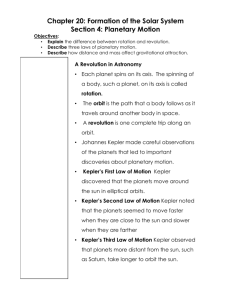
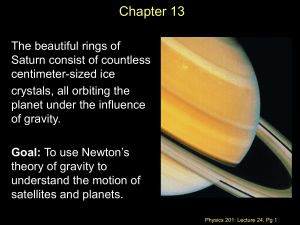
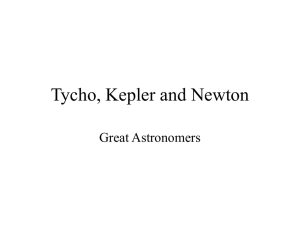
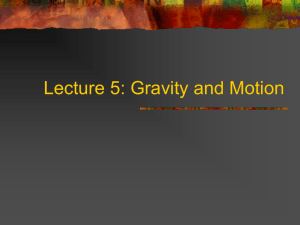
![Galilei, Galileo (1564 - 1642) [The universe] cannot be read until we](http://s2.studylib.net/store/data/005476024_1-9df318dde86b612540035c06a638f94c-300x300.png)

